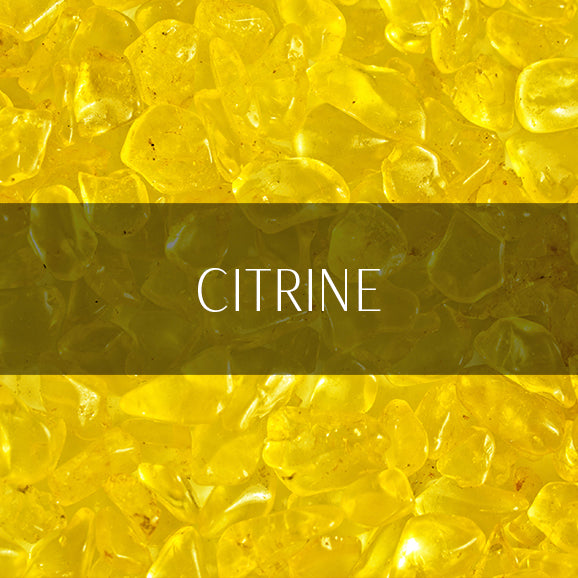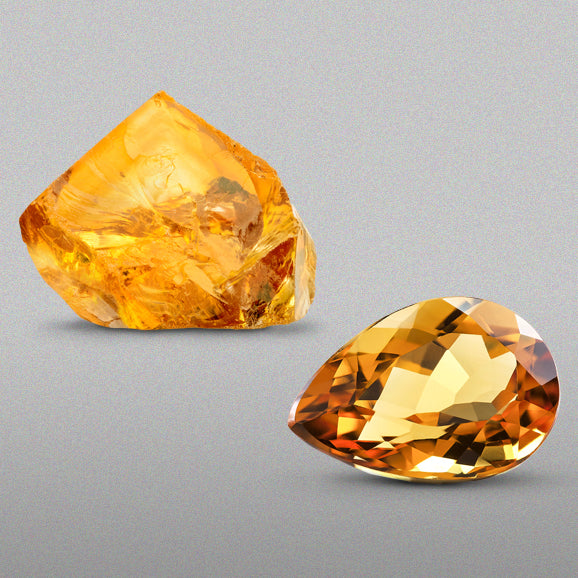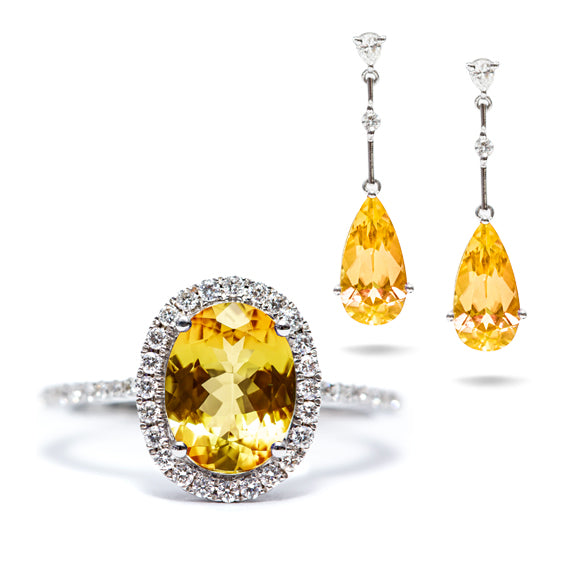Citrine’s Long History
Citrine has a long history, under the name chrysolitus it is referred to in the Old Testament as being one of the 12 stones in Aaron’s breastplate. The Ancient Greeks knew citrine and used it in tools and jewellery. In past centuries, citrine was worn as a protection against both evil thoughts and snake venom.
By the 17th century, citrine was being used in Scotland to adorn the handles of daggers and, if a large enough crystal was available, sometimes even the handle of the weapon. The 19th century saw a rise in citrine’ s popularity in Britain due to Queen Victoria’s love for Scotland and coloured gemstones. During the Art Deco period, citrine became popular for use in jewellery, furnishing and clothing design.
More recently, Kate Middleton, Jessica Chastain and Kate Winslet have been seen wearing jewellery made with bright yellow citrine.
The Meanings And Beliefs Associated With Citrine
Citrine is said to have properties that aid the body and maintain health. Wearers of the stone say that it helps with kidney and urinary tract illnesses and aids the digestive system. Claims are made that citrine can help counter the side effects of many modern pharmaceuticals. In the same vein, the stone is supposed to cleanse the blood, to improve the electrical performance of the nervous system and help the endocrine system work better.
For those concerned with cellulite, citrine can help here too!
Some alternative therapists believe that soaking a citrine in pure water produces elixir which, when drunk, removes toxins from the body. The same potion can help women with menstrual and menopausal issues.
Citrine In Jewellery
Most commercial citrines are artificially created from amethyst or smoky quartz. Citrine is these days mostly used as a gemstone. The crystals can be faceted to enhance the colour and radiance. Often used as a relatively inexpensive substitute for topaz and even yellow sapphire.
Because citrine crystals can be large, running as large as 20 carats,jewellery can feature large stones making citrine ideal for use in a bold statement piece.
While citrine is cut into all the standard shapes and sizes, some upscale designers have created non-standard cuts for exclusive jewellery.
As well as being cut with facets for classic jewellery items, citrine has long been carved in a process called lapidary. The Chinese have long been experts in this field creating portraits carved directly into citrine gems.
The crystals are quite brittle, so care needs to be taken when wearing this gemstone. Cleaning is best done by rinsing under warm water and, if greasy, with a little dish soap on a soft toothbrush.Citrine crystals are sensitive to heat and light, they can fade over time; for this reason, owners of citrine jewellery should take care to minimise exposure to hot, bright conditions. This is not a gem to wear while sunbathing, no matter how attractive the stone looks against the wearer’s skin.
A lovely bright, yet warm stone the citrine is always a pleasure to see in a piece of gift jewellery. Lovers of beauty will always enjoy wearing the citrine whether it is a small or large piece; the meaning is invariably warm and positive.


